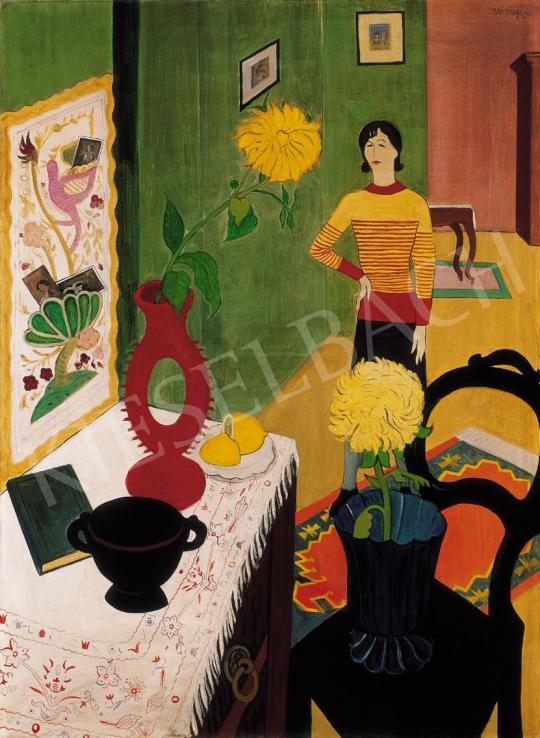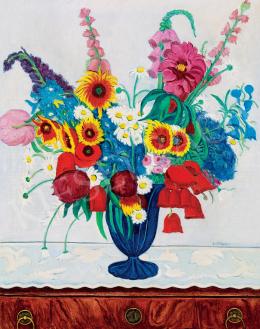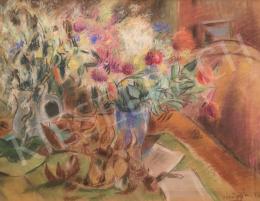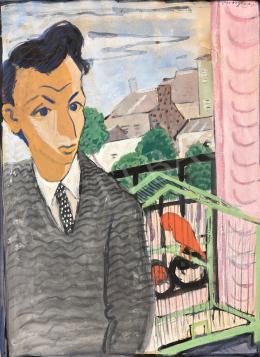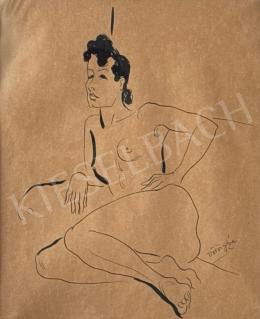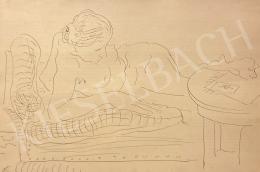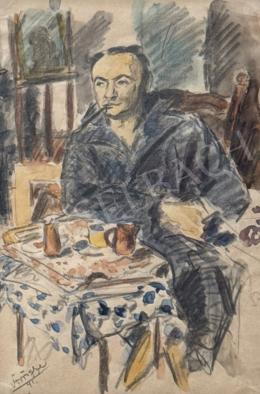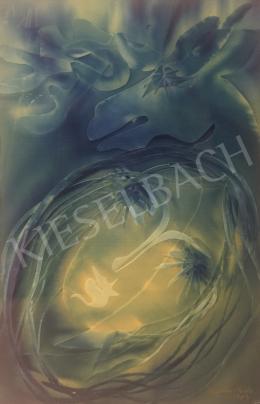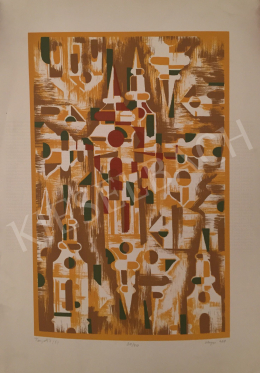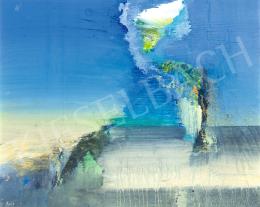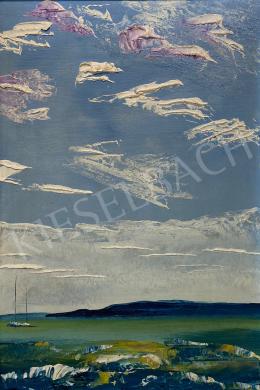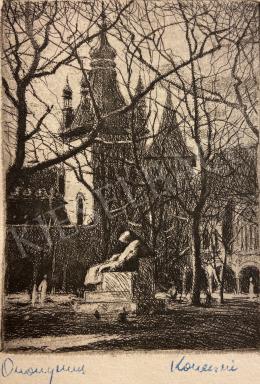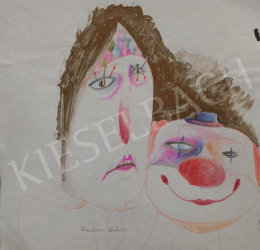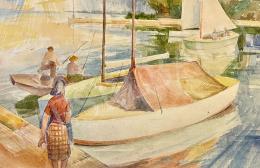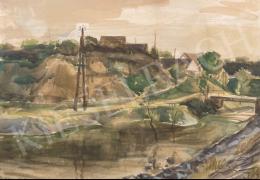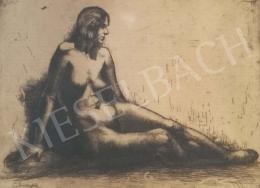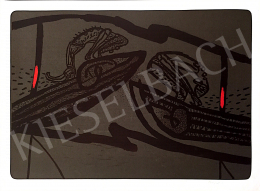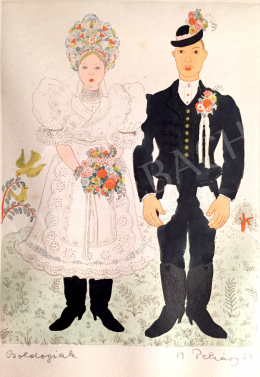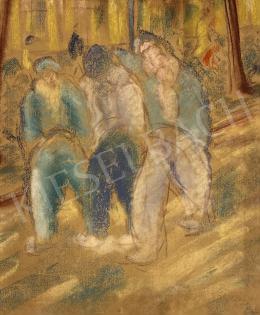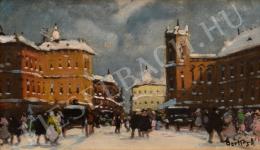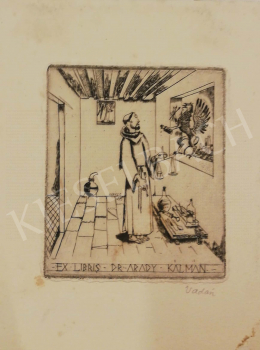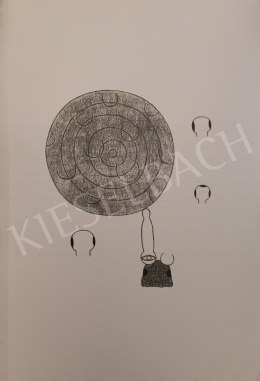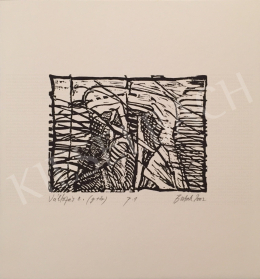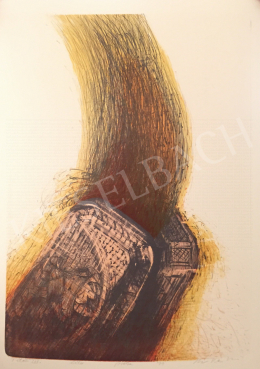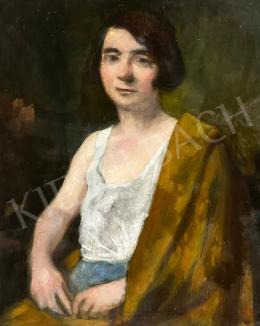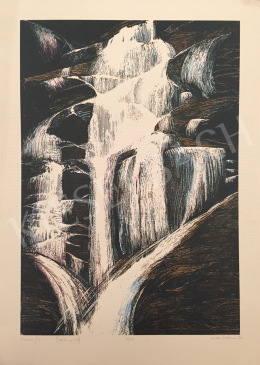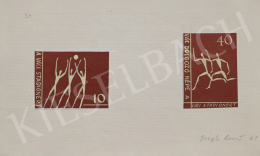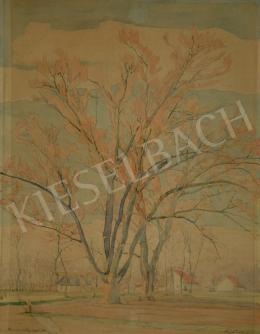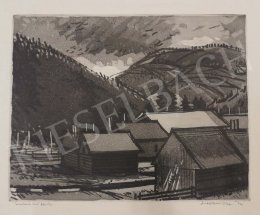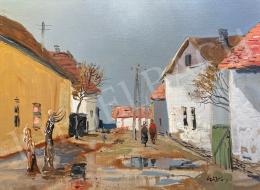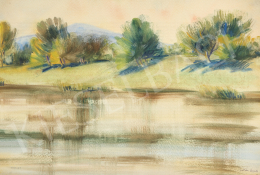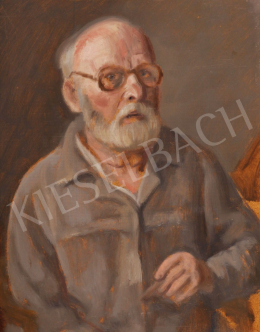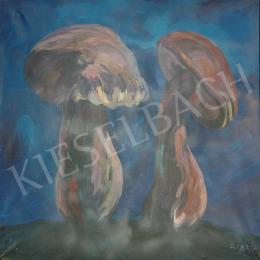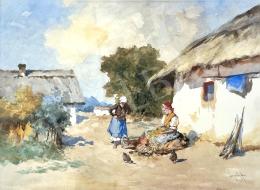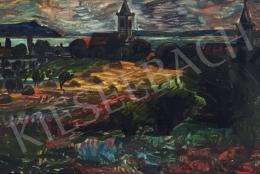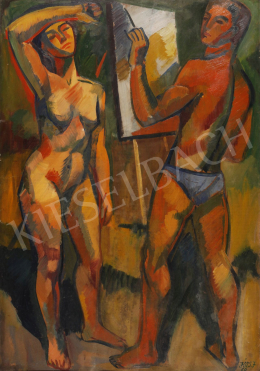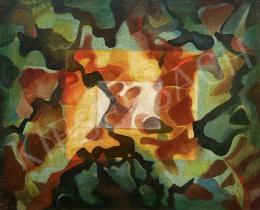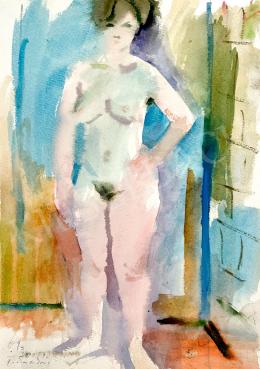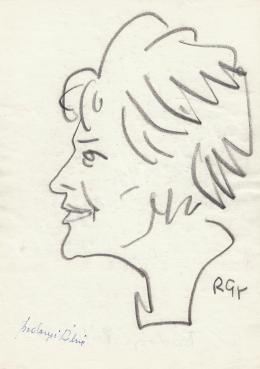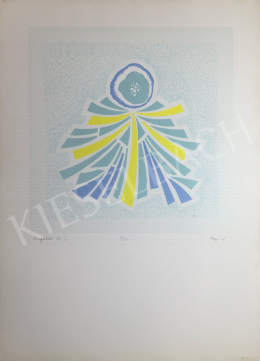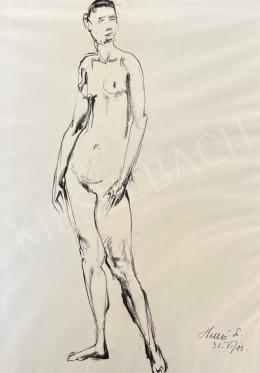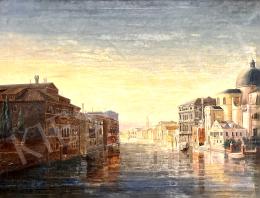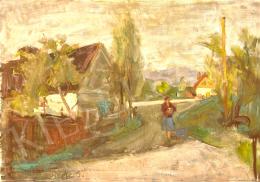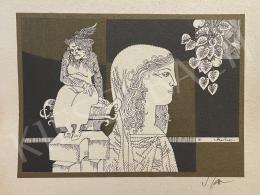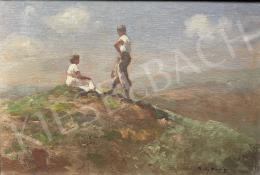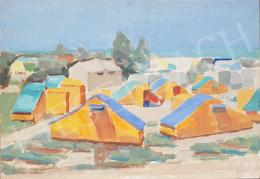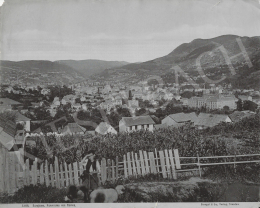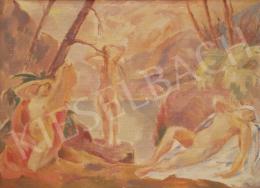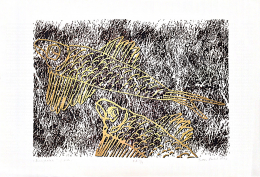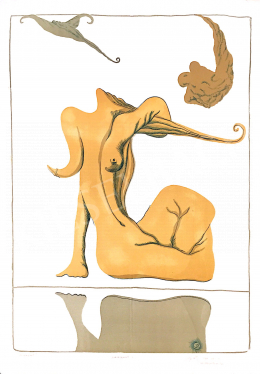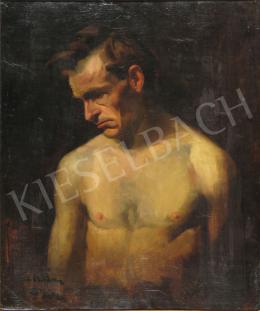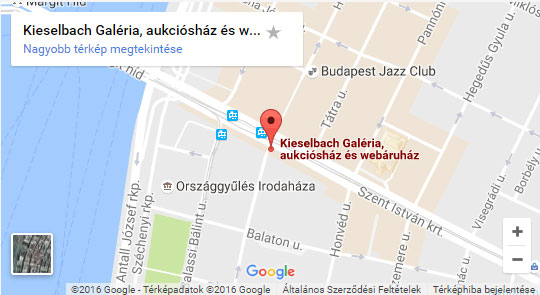Mihályfi, Ernő előszava Vörös Géza gyűjteményes kiállításának katalógusához. Alkotás Művészház. 1944. március 5-15.
Elek, Artur: Vörös Géza festményei. In.: Újság, 1944. március 17. 7.l.
Lóránt, László: Paletta. Budapest, 1944. 179-182.l.
Haulisch,Lenke előszava Vörös Géza emlékkiállításának katalógusához. Műcsarnok Kamaraterme, Budapest, 1961.
Vörös Géza (1897-1957) kiállítás. Magángyűjtők Galériája - Galerie Blitz. 1997. november 29. - december 31. Katalógus.
Muladin, Brigitta: Vörös Géza. Szakdolgozat. ELTE Bölcsészettudományi Kar, művészettörténet szak.
Vörös, Géza had the opportunity of exhibiting one of his paintings in the Műcsarnok, at the age of only 19. In the autumn of 1917 he matriculated at the Acadamy of Fine Arts in Budapest as the student of Ede Balló, Dezső Pilch and István Réti. In the beginning of the 20s he worked as the student of Károly Kernstok, adn for several years under the guidance of Adolf Fényes.
He spent the summer of 1925 in Nagybánya, but he had strong tights to the art colony in Szolnok as well. That was the time of his acquaintance with his intended wife, Anna who became the main figure of his paintings as his usual model. She is the central figure of this painting in question too.
In his artistic career made a definite change his first study tour to Paris in 1927. He visited the city several times in the next decade. Matisse had a great influence on him and he often met Kissling and Van Dongen.
Although this painting fits in to the international school of École de Paris, it gives the evidence of the individual use of the parisian lesson and experience.
His japanese decorativism turning into a europen style is combined with an elegant light sketching, precise and logical composition.
Influence of Matisse can be found in the daring contrasts of colours, in the ornamental details depicted with an obvious pleasure. Inspiration by Picasso also can be found in the rational order of the planes of loose knit.
Vörös crams objects represented from a dare view to the foreground of the picture, and he gives an emberrassing, extrem lifted up perspective to the lenghtwise room of the atelier.
In order to increase of the ornamental values Vörös totally gives up representing of plasticity filling up the outlines drown with decadent elegance with homogeneous colours. He uses the extrem coincidence of the motifs of different sizes being in different directions from the plain of the picture as an exciting visual gag going back to a tradition of several centuries. This way the head of the model seems smaller than the bright yellow flower right next, even much smaller the table sent to the background. Beside the brave combining of the represented objects Vörös enhances to extrems the ornamental contrast of the colours too, in the meanwile as he was deliberately examining the dynamic reciprocity of sense of colour.
The red colour scheme and complementary of the vase having unique form on the commode become absolutaly impregnated in front of the green background, nearly tearing from the surface of the painting.
The objects in the foreground are often used elements of the artis's still lifes. The carpet having Islamic motifs on the wall shows his affection for the art of the Far-East likewise his french ideals, Matisse, Picasso and Dufy also had.
The oeuvre of Géza Vörös stands in the limelight due to the revival of art dealing of the last decade. Appreciation of his works was increased by the ones of outstanding ornamentalism apperaing at the auctions and the attention of art historians are also drown to the oeuvre of the artist.
Vörös is regarded as one of the most characteristic representative of the french line of the hungarian painting based upon his outstanding works in the 1930s, between the two world wars.
Owing to the fine taste of the organizer of this collection only outstanding works represent the most significant period of the artist's oeuvre.






